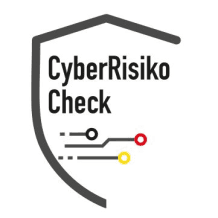Transport Layer Security (TLS/SSL) forms the backbone of modern internet communication. In an era where cyber attacks are increasing daily and sensitive data is constantly exchanged, the security of digital connections is more important than ever. Companies, organizations, and private internet users rely on TLS/SSL to protect confidential information and ensure trust in digital interactions.
Why is TLS/SSL so significant? The answer lies in the way the technology handles data encryption and authentication. TLS (formerly known as SSL) ensures that data sent over networks is encrypted, thus protecting it from unauthorized access. A hacker intercepting the data traffic sees only encrypted, seemingly random characters that cannot be decrypted without the necessary key.
Frequently asked W-questions related to TLS/SSL include: "What is TLS/SSL?", "How does TLS/SSL work?", "Why is TLS/SSL important?" and "What advantages does TLS/SSL offer over unencrypted connections?" These questions highlight the general interest in the technology and underscore its importance in modern digital communication.
What exactly happens when a TLS/SSL connection is established? The process begins with a so-called handshake, where the client and server authenticate each other and negotiate parameters for secure communication. This handshake involves several steps, including the exchange of cryptographic keys, selecting a common encryption protocol, as well as a certificate verification mechanism to definitively establish the identity of the server. One of the central tasks here is for the parties involved to agree on the encryption algorithms used, which ensure that the transferred data remains hidden from unauthorized access.
During the handshake process, the digital certificate plays a crucial role. Certificates are issued by so-called Certificate Authorities (CAs) and confirm the identity of the server. A correctly issued certificate ensures that the client is indeed communicating with the right server and not with an attacker trying to manipulate the data traffic using man-in-the-middle attacks. Modern browsers implement strict verification mechanisms to ensure that certificates are not forged or compromised.
How does encryption work in TLS/SSL? At its core, encryption relies on symmetric, asymmetric, and sometimes hybrid cryptographic methods. The asymmetric part of the key exchange, often using RSA or ECDHE (Elliptic Curve Diffie-Hellman Ephemeral), allows for the establishment of a secure channel, even if the initial communication occurs unencrypted. Once this secure channel is established, the actual data encryption happens via a symmetric algorithm, such as AES (Advanced Encryption Standard), capable of encrypting large amounts of data quickly and efficiently. This combination is known as the "hybrid approach," as it takes advantage of both encryption methods to ensure a high level of security.
The significance of TLS/SSL also becomes apparent when considering the challenges of modern cybercrime. Hackers often target insecure connections to access personal information, credit card data, or trade secrets. Here, TLS/SSL serves as the first line of defense by providing an additional layer of security that offers significant protection even when data is intercepted. In times when identity theft and cyber attacks are becoming increasingly sophisticated, the continuous development of TLS/SSL is essential to withstand new threats.
What concrete advantages does TLS/SSL offer? On one hand, TLS/SSL improves users' trust in digital services. Websites using TLS/SSL are typically marked in browsers by a padlock symbol or a green address bar – a visual signal representing security and reliability. On the other hand, the implementation of TLS/SSL has now been standardized and is relatively easy to integrate into existing systems, responding to the growing need for privacy and security in web applications. Furthermore, TLS/SSL enables a basis of trust on which further security-relevant applications, such as online banking or e-commerce services, can build.
Who is responsible for maintaining a secure TLS/SSL infrastructure? Companies that offer online services are encouraged to regularly update their certificates and harden systems against newly discovered vulnerabilities. New protocol versions and patches are continuously developed to close security gaps that cybercriminals could potentially exploit. Failure to implement these updates promptly can make the entire system vulnerable and result in data leaks or even financial losses. It is, therefore, a shared responsibility among IT experts, security officers, and C-level executives to keep the topic of TLS/SSL front and center in IT security.
What does the future of TLS/SSL look like? The evolution of technology is inexorably progressing as it is continuously adapted to the new challenges of digital communication. With the rise of quantum technologies and growing computing power, current encryption methods may face limits in the future. Researchers are already working on quantum-safe algorithms that will be capable of withstanding the attacks of powerful quantum computers. These developments are crucial for ensuring the security of TLS/SSL in an increasingly connected and data-intensive world. The future of secure communication will also continue to depend significantly on the ability to respond flexibly to technological innovations.
Another aspect of modern TLS/SSL applications is the optimization of performance. While encryption is secure, it must not lead to a noticeable slowdown of web applications. Here, developers have introduced techniques such as session resumption or optimization of the handshake process to minimize latency and ensure a seamless user experience. Particularly in e-commerce and data-intensive applications, it is crucial that security measures do not impede user-friendliness. The balance between maximum security and optimal performance remains one of the greatest challenges in IT security.
What happens when TLS/SSL is not implemented correctly? A faulty or outdated implementation can lead to significant security gaps. There have been cases where inadequately protected TLS/SSL configurations facilitated attacks by allowing attackers, for example, to tap into the data traffic. Such vulnerabilities can result in sensitive information falling into the wrong hands, which can cause not only financial damage but also permanently harm a company's reputation. Therefore, it is essential to consistently implement all security updates and best practices.
In summary, Transport Layer Security (TLS/SSL) is far more than just a technical standard. It is a fundamental component of a secure and trustworthy internet infrastructure. The technology ensures that data can be transmitted securely even over insecure networks, thereby forming an essential building block for the digital economy. Companies and individuals alike benefit from this technology as it reduces the risk of cyber attacks and strengthens trust in online services. Through continuous development and adaptation to new security requirements, TLS/SSL will remain an indispensable tool in the fight against cybercrime in the future.
The discussion about TLS/SSL is not limited to technical aspects. Rather, it also involves the growing awareness of security in the digital realm, which is continuously rising in our society. Questions like "How can I protect my data online?" or "Why should I pay attention to a secure connection?" are becoming increasingly important, especially in times of remote work and growing digitization. Regulatory authorities and data protection experts also emphasize that secure communication channels are a central part of protecting personal data.
The impacts of TLS/SSL are evident not only in the private sector but also in the public domain. Authorities and institutions utilize these encryption technologies to securely exchange sensitive data between various locations. Especially in areas such as healthcare, the financial industry, or public administration, the confidential transmission of information is essential. TLS/SSL supports the integrity and confidentiality of data, even in the event of a security incident or targeted attack.
In conclusion, TLS/SSL is a key technology that goes far beyond the mere encryption of data. It establishes security standards that ensure both economic success and the protection of privacy in the digital age.
Transport Layer Security (TLS/SSL) in Germany: Current Developments
The importance of transport layer security (TLS/SSL) in Germany is continuously growing. According to recent studies by the Federal Office for Information Security (BSI), German companies are increasingly affected by cyber threats. The Bitkom Association reports that 84% of German companies have been victims of cyber attacks in the last two years.
Particularly in the area of transport layer security (TLS/SSL), the following trends are observed:
Increasing investments in preventive security measures
Heightened awareness of holistic security concepts
Integration of transport layer security (TLS/SSL) into existing compliance frameworks
EU Compliance and Transport Layer Security (TLS/SSL)
With the introduction of the NIS2 Directive and stricter GDPR requirements, German companies must adapt their security strategies. Transport Layer Security (TLS/SSL) plays a central role in meeting regulatory requirements.
Important compliance aspects:
Documentation of security measures
Regular review and updates
Proof of effectiveness to supervisory authorities
Practical Implementation in Corporate Daily Life
The integration of transport layer security (TLS/SSL) into daily corporate life requires a structured approach. Experience shows that companies benefit from a gradual implementation that considers both technical and organizational aspects.
Think of transport layer security (TLS/SSL) as an insurance policy for your company: The better prepared you are, the lower the risk of damage from security incidents.
Further Security Measures
For a comprehensive security strategy, combine transport layer security (TLS/SSL) with other security measures:
Vulnerability Management - Systematic vulnerability management
Penetration Testing - Comprehensive security testing
Security Hardening - Employee awareness
Incident Response Plan - Preparation for security incidents
Conclusion and Next Steps
Transport Layer Security (TLS/SSL) is an essential building block of modern cybersecurity. Investing in professional transport layer security (TLS/SSL) measures pays off in the long term through increased security and compliance conformance.
Would you like to optimize your security strategy? Our experts are happy to assist you in implementing transport layer security (TLS/SSL) and other security measures. Contact us for a non-binding initial consultation.
🔒 Act now: Have your current security situation assessed by our experts
📞 Request consultation: Schedule a free initial consultation on transport layer security (TLS/SSL)
📋 Compliance Check: Review of your current compliance situation
📌 Related Topics: Cybersecurity, IT Security, Compliance Management, Risk Assessment




